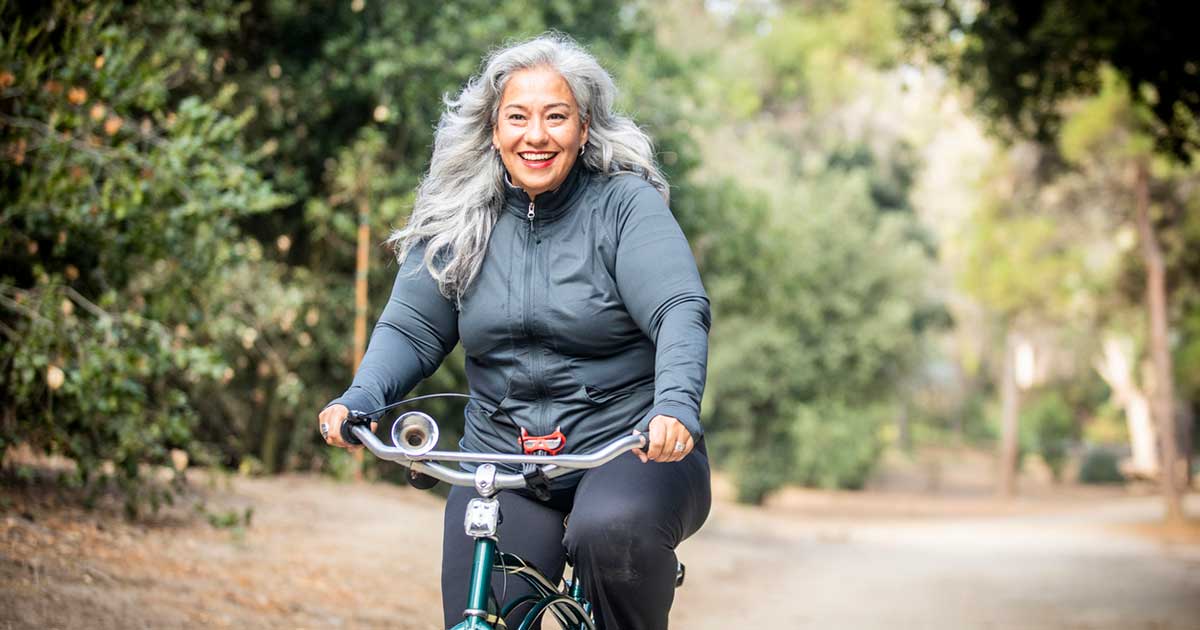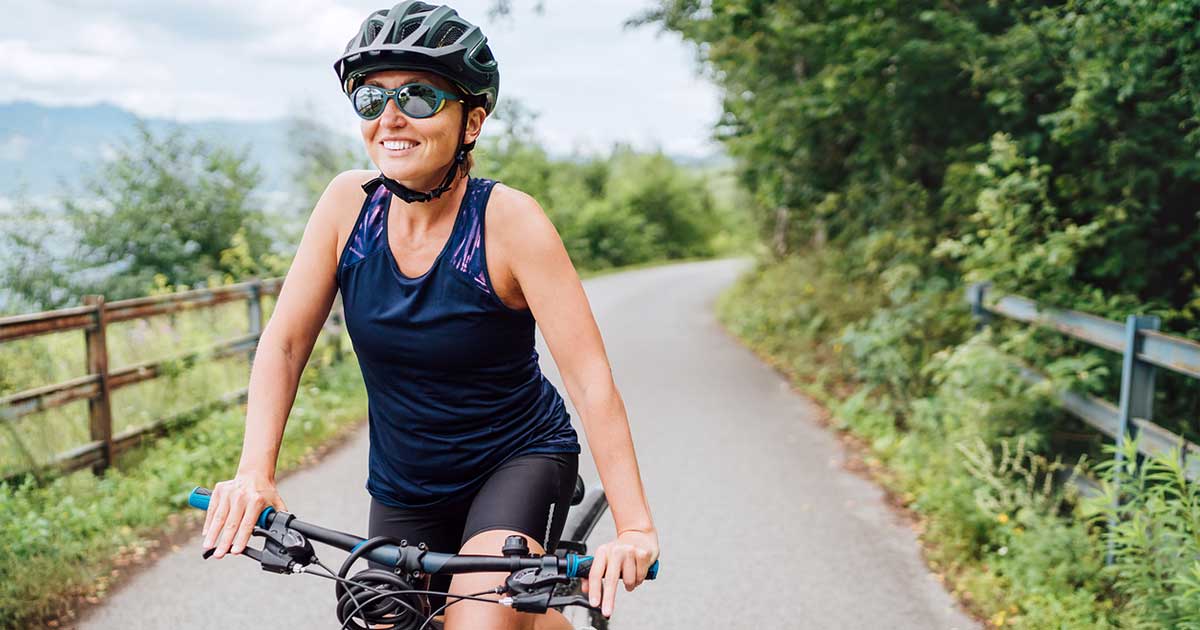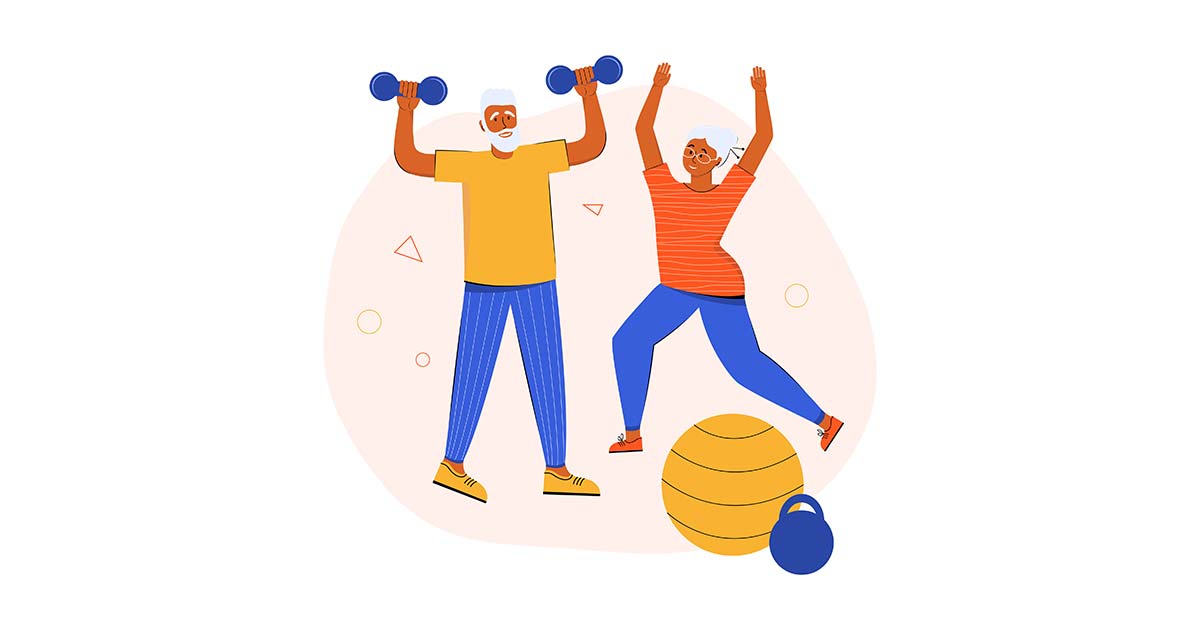
Advice to improve your movement, fitness, and overall health from the #1 in orthopedics in the U.S.
Cycling Tips for New Riders
The type of bike you choose, how it fits your body and the way you ride are all important.
Advice to improve your movement, fitness, and overall health from the #1 in orthopedics in the U.S.

“Bicycling is a rewarding, accessible form of exercise that has huge benefits for the cardiovascular system as well as overall health,” says Joel Press, MD, Physiatrist-in-Chief at HSS. It offers a challenging workout without subjecting the joints in the lower extremities—namely, the knees—to excessive amounts of impact. “You can also burn several hundred calories per hour depending upon the level of intensity of the workout,” he adds. Dr. Press offers these tips for new riders.
Safety Tips for Road Bikers
It may sound obvious, but first and foremost, you should always wear an approved, well-fitting helmet, says Dr. Press. If you’re road biking, follow the posted rules of the road and stop at stop signs and lights. Use bike lanes whenever possible.
Be especially mindful while cycling in traffic. Ride with the flow of traffic and make eye contact with drivers before you turn or change lanes to make sure they’re aware of your presence.
Dawn, dusk and evening rides require proper lighting on the front and rear of your bike. You need to be visible to drivers as well as other cyclists and pedestrians. Many states require white headlights and red taillights; to find out what your state requires, visit the League of American Bicyclists.
Getting the Right Bike Fit
If you’re starting from scratch, choose the right bike for what you’re going to do. Some questions to ask before you commit:
- Are you only going to be going for occasional rides in the park or on trails, or will you be using your bike as a daily mode of transportation?
- Do you want to train for a cycling race? If not now, would you consider it in the future?
- Will you be riding on mostly pavement, or do you want to take your bike into rockier terrain?
There are many different styles of bikes, depending on what you want to use them for: cruiser, road, off-road full suspension, off-road hard tail, hybrid, cyclo-cross, and fixed gear just to name a few. Talk to your local bike shop about what you need from the bike, and they can match you up with the style that’s best for you.
Overuse injuries are common in biking due to the repetitive motions, Dr. Press says. Making sure you are fitted to your bike in the most efficient way will help prevent these issues, particularly to the knees, lower back and neck.
“If you’re a regular or serious biker, make sure that your bike fits you appropriately with respect to frame size, seat height and handlebar height,” he adds. For example, the saddle (seat) height should allow your knee to bend 25 to 35 degrees when the pedal is at its bottom-most point in the stroke.
Dr. Press also recommends taking the time to have a safety check and tune-up done on your bike once a year. You’ll have a smoother ride and fewer mechanical issues that might interrupt your cycling routine.
Avoiding Injuries from Cycling
If you can avoid it, don’t pedal in a high gear—a harder setting—for long periods of time, as this can place more pressure on the knees and may lead to an overuse injury. A reasonable cadence, or the number of pedal revolutions, would be 70 to 90 revolutions per minute (rpm) for a beginning cyclist. This provides reasonable exercise without placing added stress on the knees, back and hips, says Dr. Press.
If you ride a road bicycle with racing handlebars, don’t ride with your hands on the lower portion of the curved part of the handlebars (the racing or drop position) for long periods of time, he adds. This may cause neck strain or cramps in the shoulders or arms. For general cycling, you might prefer to ride a mountain or commuter bike centered on comfort and less on design.
After a long uphill ride, be sure to pedal on the downhill instead of coasting. This helps to clear the lactic acid that was building up in your muscles during the uphill component of the ride.
Published 8/28/2023

